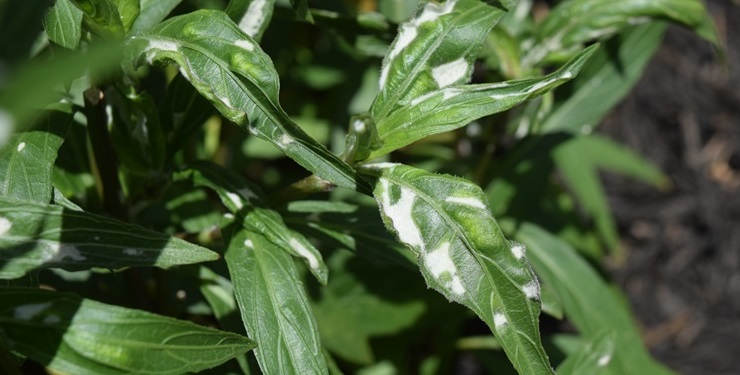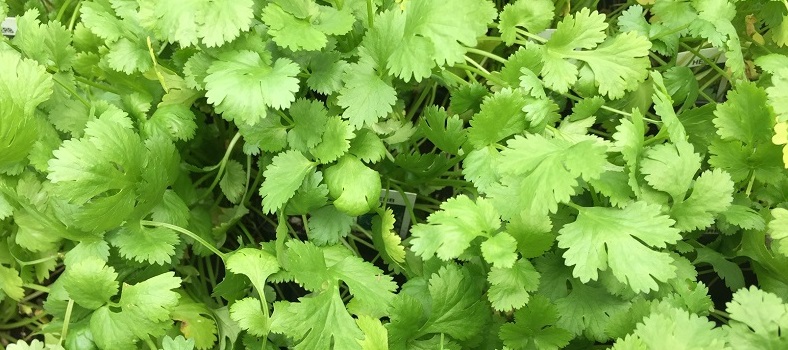Keep those Loopers off your cabbage!
If you have ever grown members of the Crucifer family, such as broccoli, cabbage, cauliflower, kale, radish or turnip, you have probably experienced the wrath of one of three hungry caterpillars. The cabbage looper, the imported cabbageworm and the larvae of the diamondback moth can all make your beautiful vegetable leaves look like Swiss cheese!

Imported cabbageworms adults are probably the most conspicuous of the three, as a white to yellowish butterfly flitting about the garden laying their eggs on your plants! Their larvae are a velvety green, blending in well on broccoli stems and stalks.
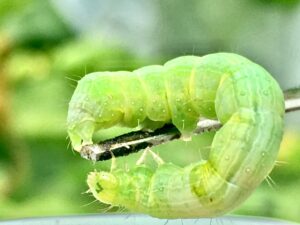
The cabbage looper moth is night flying, and you may never see it. Its larvae can grow up to 2″ long, and it earns its name by the characteristic way it loops along like an inchworm. It’s feeding can leave the leaves with large holes, looking tattered.
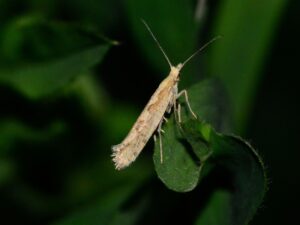
The diamondback moth caterpillars are very small, approximately 1/3″ long, and make smaller holes in the leaves than the other two. You may also see these small worms lowering themselves on a silken thread if disturbed.
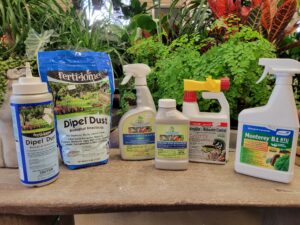 Fortunately, we have effective organic products to help us control the pests on our Crucifers! Bt, or Bacillus thuringiensis, is available as a dust or a spray. The dust may be applied to the young crops with an applicator which disburses the product more thoroughly than just shaking it onto the plant, and helps get the dust under the leaves where the caterpillars often feed. The spray also disperses the product where it is needed, and should be applied late in the day, as it breaks down quickly in the sunlight. After consuming Bt, a bacterial stomach poison, the caterpillars may not die for several days, but stop eating and damaging your plants immediately.
Fortunately, we have effective organic products to help us control the pests on our Crucifers! Bt, or Bacillus thuringiensis, is available as a dust or a spray. The dust may be applied to the young crops with an applicator which disburses the product more thoroughly than just shaking it onto the plant, and helps get the dust under the leaves where the caterpillars often feed. The spray also disperses the product where it is needed, and should be applied late in the day, as it breaks down quickly in the sunlight. After consuming Bt, a bacterial stomach poison, the caterpillars may not die for several days, but stop eating and damaging your plants immediately.
If caterpillar infestation is severe, you may have to apply the Bt once or twice a week to get sufficient control.
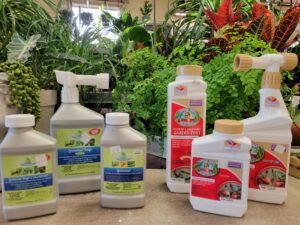
Another organic option is a product containing Spinosad. Captain Jack’s Deadbug Brew is available in ready-to-spray and concentrate forms, and should also be used once or twice a week in severe infestations. Spray late in the day, after the bees have stopped visiting plants in the area, as this product is also toxic to bees.
For more information on these pests, follow this LINK.


